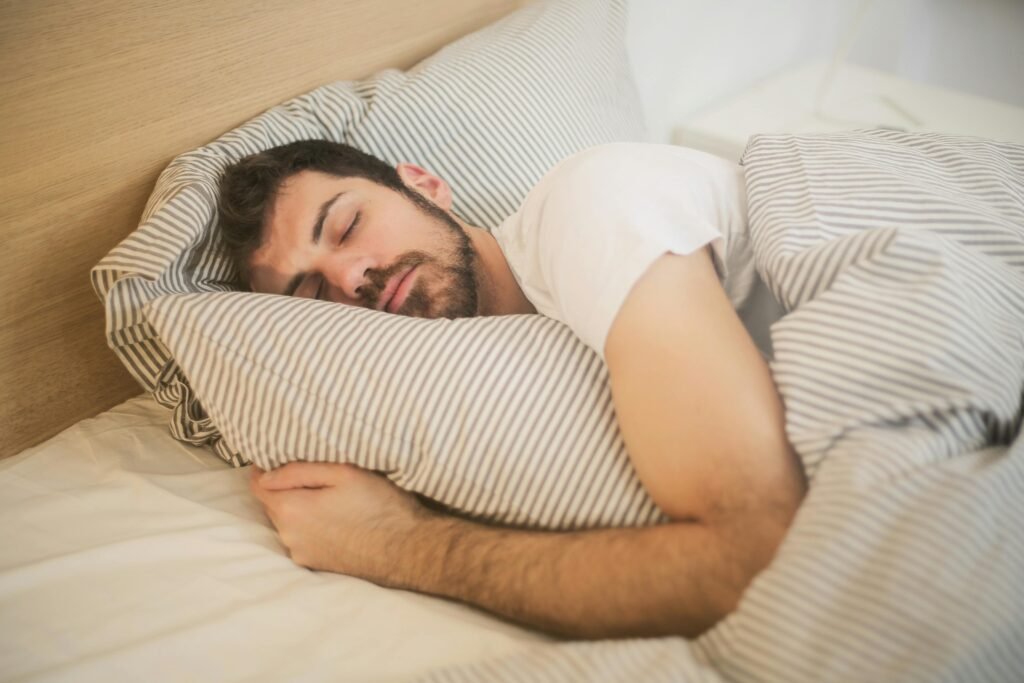In the pursuit of a restful night’s sleep, many individuals find themselves exploring unconventional methods to calm a restless mind and facilitate easier entry into slumber. One such technique gaining attention is butterfly tapping, which claims to harness the power of rhythmic movements to induce relaxation and promote sleep. But does this approach really live up to expectations?
Dr Imraan Khan (PT), consultant head physiotherapist at Wockhardt Hospitals, Mira Road, highlights the significant impact that stress can have on sleep quality. “Excessive stress often leads to difficulty in falling asleep, poor sleep schedules, and in severe cases, insomnia,” Dr Khan explains. Understanding the role of stress as a precursor to sleep disturbances underscores the importance of effective stress management techniques.
The butterfly tapping technique, popularized by somatic anxiety coach Jolie Slovis, involves a simple yet deliberate sequence of tapping movements. By gently tapping alternately on the left and right sides of the chest, mimicking the delicate flutter of a butterfly, proponents suggest that this rhythmic action can soothe an overactive mind and facilitate quicker onset of sleep. Slovis, in an Instagram post, describes the method as a tactile solution to quieting the mind amidst the flurry of daily thoughts.

Dr Khan provides a nuanced perspective on the effectiveness of butterfly tapping, acknowledging its potential benefits while also highlighting its limitations. “For some individuals, engaging in rhythmic movements like butterfly tapping can indeed help shift the body into a relaxed state conducive to sleep,” he notes. However, he cautions that the efficacy of such techniques may vary based on individual factors such as underlying medical conditions or sensitivities to sensory stimuli.
Importantly, Dr Khan points out that individuals with conditions like ADHD (Attention Deficit Hyperactivity Disorder) may find the continuous hand movements of butterfly tapping more distracting than soothing. He suggests that achieving effective sleep hygiene depends on tailoring strategies to fit each person’s unique needs and preferences. This sentiment underscores the importance of tailoring sleep strategies to accommodate diverse physiological and psychological profiles.
Beyond butterfly tapping itself, Dr Khan advocates for a holistic approach to improving sleep quality. He suggests that to maintain effective sleep hygiene, it’s important to set a regular sleep schedule, enhance your sleep environment, and include relaxation practices, like listening to soothing music. By integrating butterfly tapping into a broader framework of stress management and sleep hygiene practices, individuals can potentially enhance their overall sleep experience.
In assessing the broader implications of butterfly tapping, it becomes evident that its utility extends beyond a standalone sleep aid. Its introduction into mainstream discourse reflects a growing recognition of alternative therapies in addressing common health concerns. Nevertheless, Dr Khan stresses the importance of empirical validation and individualized application in determining its suitability for each individual.
Moreover, the integration of butterfly tapping into discussions on sleep hygiene underscores a paradigm shift towards personalized wellness solutions. By encouraging individuals to explore innovative approaches alongside established practices, healthcare providers empower their patients to take proactive steps towards better sleep health.
In conclusion, while butterfly tapping presents a promising avenue for improving sleep quality through tactile stimulation and rhythmic engagement, its effectiveness hinges on individual responsiveness and compatibility with existing sleep habits. Dr Khan’s expert insights illuminate both the potential benefits and practical considerations associated with this technique. Ultimately, by fostering informed decision-making and promoting holistic sleep practices, healthcare professionals and individuals alike can collaborate in cultivating healthier sleep habits and achieving restorative rest.


